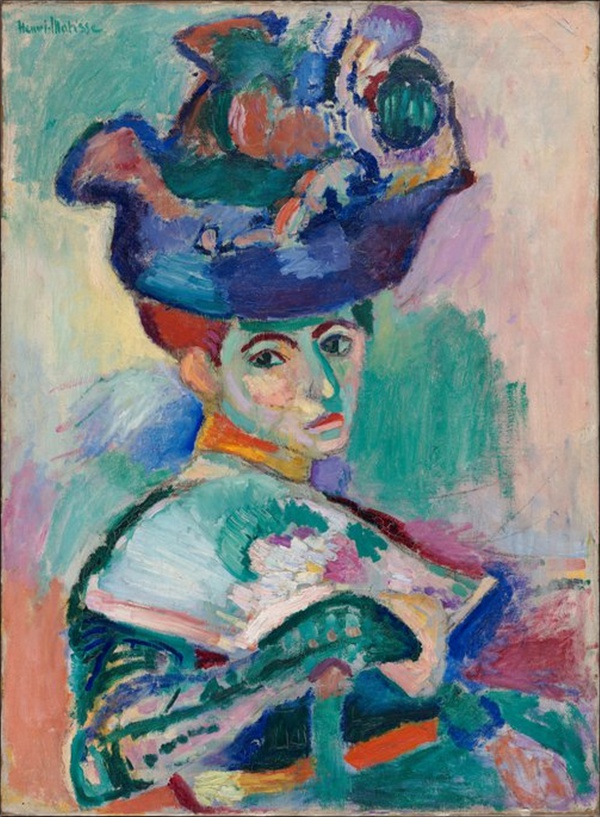Facts About Woman with a Hat
"Woman with a Hat" is one of Henri Matisse's most renowned paintings, depicting his wife, Amelie. Created in 1905, this vibrant oil on canvas debuted at the Salon d'Automne the same year. It was exhibited alongside works by other artists who would later be known as the "Fauves." The term "Fauvism" was coined by critic Louis Vauxcelles, who drew a striking contrast between Matisse's bold, colorful style and a Renaissance sculpture displayed at the same exhibition. He famously remarked, "Donatello chez les fauves" which translates to "Donatello among the wild beasts."
This painting represented a pivotal moment in Matisse's career, marking his departure from the structured techniques of Divisionism towards a freer, more expressive use of color and brushwork. The audacious style of "Woman with a Hat" shocked many viewers at the time.
Despite mixed reviews, the painting captured the interest of art collectors Gertrude and Leo Stein, who ultimately purchased it, providing Matisse with much-needed encouragement. There was some debate within the Stein family, as Sarah Stein, wife of Michael Stein, claimed she initially acquired the painting. Nonetheless, it became a notable piece in their collection.
Eventually, the painting found its way to the Haas family in San Francisco. In 1990, Elise S. Haas bequeathed "Woman with a Hat" to the San Francisco Museum of Modern Art, where it remains a centerpiece of their collection.

 Mexico
Mexico